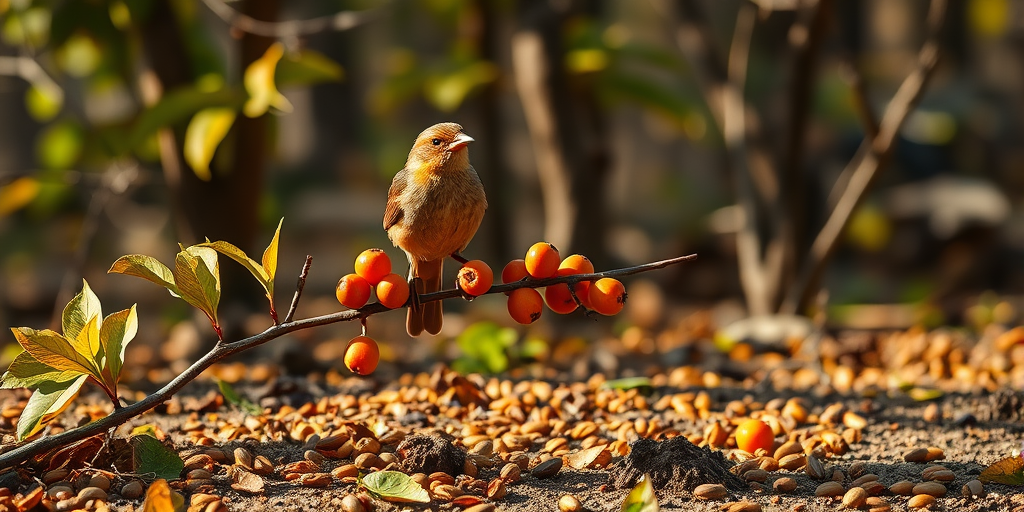Can avian behavior reshape the growth patterns of plant communities? Birds perform a crucial role in seed distribution through ingestion and external attachment, fostering nutrient-rich environments that boost germination. This symbiotic relationship fortifies plant resilience and encourages species diversification in varied settings by reducing localized competition. Acting as natural dispersal agents, birds contribute to a complex network that maintains ecosystem stability and drives ecological succession. The discussion that follows outlines the mechanisms behind these interactions, examining their technical processes and far-reaching environmental impacts.
Ecological and Environmental Impacts of The Role of Birds in Seed Dispersal
Birds traverse extensive distances during migration and routine foraging, creating connections between otherwise isolated plant populations. Their movement facilitates long-distance dispersal of seeds, which maintains genetic flow among disparate plant communities. This natural method of transport is critical for sustaining genetic diversity, even when landscapes become fragmented by human activity or natural disturbances.
Plants benefit profoundly from bird-mediated seed dispersal. When birds carry seeds to less competitive regions, it reduces overcrowding and increases the likelihood of seedlings establishing in optimal sites. Additionally, the nutrient-rich droppings left behind serve as a natural fertilizer, improving seed germination rates and fostering conditions conducive to robust plant development. The reduction in localized competition spurs a more even plant distribution across varied microhabitats.
The broader environmental implications of these interactions are substantial. Bird-driven seed dispersal not only aids forest regeneration and habitat restoration but also enhances the overall resilience of ecosystems. As seeds colonize degraded areas, they contribute to ecosystem stability by re-establishing native flora. This process plays a pivotal role in maintaining the health of natural landscapes by reinforcing connectivity and facilitating sustainable plant community dynamics.
- Increased gene flow across populations.
- Restoration of fragmented habitats.
- Enhancement of plant biodiversity and resilience.
- Facilitation of forest renewal.
- Contribution to overall ecosystem health.
Avian Behavior and Feeding Strategies in The Role of Birds in Seed Dispersal
Birds exhibit a range of dietary habits that span specialized fruit consumption and broader generalist feeding strategies. These distinct preferences influence seed dispersal dynamics by determining which fruits attract avian species and initiate the process of seed ingestion. Frugivorous birds, in particular, contribute effectively to seed transport when they select nutritious fruits that favor seed survival during passage. Their feeding choices directly correlate with the success of dispersal events and reinforce mutualistic interactions between birds and plants.
The digestive processing of ingested fruits plays a critical role in seed viability after passage through the avian gastrointestinal tract. The efficient breakdown of fruit pulp triggers germination by exposing seeds to nutrient-rich droppings. This natural processing not only enhances seed coat permeability but also provides an organic medium that may accelerate or improve germination rates. Observations in avian digestive behavior have demonstrated that differences in metabolic pathways can yield variations in the condition and readiness of seeds for growth.
Movement patterns and foraging behaviors further modulate seed dispersal efficiency across ecosystems. Territorial foraging and migratory movements contribute to both localized and long-distance seed distribution. These behaviors create dispersal gradients that optimize seed arrival in favorable microhabitats, thus reinforcing ecological continuity.
- Specialized frugivory leading to effective endozoochory
- Impact of migratory patterns on long-distance seed dispersal
- Variations in digestive processing affecting seed viability
Final Words
In the action, the discussion spotlighted birds’ influence in seed dispersal, detailing both ingestion and external transport methods.
The article presented key studies, examined feeding approaches, and emphasized the ecological benefits of avian-plant interactions.
It addressed how plant propagation via winged species contributes to broader environmental stability and diversity.
The Role of Birds in Seed Dispersal continues to serve a vital function in building resilient ecosystems.
Optimism remains high as ongoing research and conservation efforts support these natural processes.
FAQ
How do birds help in seed dispersal?
A: Birds disperse seeds through endozoochory (eating and excreting seeds) and epizoochory (carrying seeds on feathers/feet). These methods transport seeds across vast distances, supporting plant distribution.
What makes birds effective seed dispersers?
A: Birds possess unique adaptations like efficient digestive systems and wide-ranging flight capabilities. They process fruits without damaging seeds and distribute them across diverse habitats.
How does bird-mediated seed dispersal benefit plant populations?
A: Bird dispersal increases plant genetic diversity, reduces competition between seedlings, and enables colonization of new areas. Seeds often receive nutrient enrichment through the digestive process.
What role do migratory birds play in seed dispersal?
A: Migratory birds transport seeds across long distances during seasonal movements, connecting isolated plant populations and facilitating gene flow between different ecosystems.
How do birds enhance forest regeneration?
A: Birds spread seeds to disturbed or cleared areas, accelerating forest recovery. Their droppings provide nutrients that improve seed germination and seedling growth rates.
What types of seeds do birds typically disperse?
A: Birds primarily disperse seeds from fleshy fruits and berries. Plants have evolved bright colors and nutritious pulp specifically to attract avian dispersers.
How does seed dispersal by birds support biodiversity?
A: Bird-mediated dispersal creates diverse plant communities, maintains habitat connectivity, and supports ecosystem resilience through varied seed distribution patterns.


